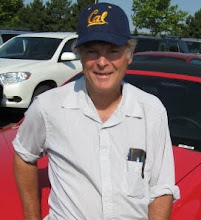A bitter letter from President Abraham Lincoln to Union commander General George G. Meade claiming the Civil War could have ended following the 1863 Battle of Gettysburg had Meade pursued Confederate General Robert E. Lee on his retreat to Virginia after Gettysburg was never delivered.
And the bloody Civil War, where as many as 700,000 Americans died (an estimated 10,000 at Gettysburg, plus 40,000 wounded,) lasted another two years.
It was near the tiny town of Gettysburg, Pennsylvania, where General Lee’s only foray into the North was turned back following a brutal three-day battle under hot, July skies. Other battles on Northern soil, in Maryland and Kentucky in the fall of 1862, were engaged by Confederate forces, yet achieved similar results.
Facts, events, and people involved with the Battle of Gettysburg include:
* May 6, 1863 Lee wins Battle at Chancellorsville, Spotsylvania County, Virginia … gets Confederacy approval to invade North
* June 3 General Joseph Hooker leads 95,000 Union soldiers, General Lee 75,000 Confederate soldiers in area
* June 9 Largest cavalry battle of war, Brandy Station, Virginia … First lieutenant J.E.B. Stuart leading Confederate soldiers, General Alfred Pleasonton Union soldiers … total of 22,000 combatants, 1,100 casualties
* June 14-15 Confederate Lieutenant General Richard S. Ewell captures 9,000-strong Union garrison, Winchester, Virginia
* June 26 With little resistance, Lee occupies Cumberland Valley, Pennsylvania … sends soldiers to reconnoiter for supplies, including Gettysburg, population 2,400
* June 28 Hooker replaced by Meade … Lee decides to bring entire force to meet Union army at Gettysburg
* July 1 Confederacy wins day one of battle … Union loses 9,000, including 3,000 captured … Confederate loses 6,000
* July 2 Long day of musket and cannon fighting leaves each side with about 9,000 casualties …Confederates gain little ground
* July 3 Lee makes bold, secondary decision to engage Union soldiers in the center of their defense line, on Cemetery Ridge … “Pickett’s Charge” sends 18,000 Confederate soldiers across open field in midday and, though casualties high on both sides, tips the Battle of Gettysburg to Union
* November 19 President Lincoln delivers Gettysburg Address
* April 8, 1865 Civil War ends when Lee surrenders to Union General Ulysses S. Grant, Appomattox Courthouse, Virginia
The Battle of Gettysburg was peculiar in the number of tactical mistakes on both sides that could have altered the outcome of the battle many historians view as the turning point of the war; such as Confederate General James Longstreet‘s misunderstanding of Lee‘s July 3 plan that led Lee to change tactics and attack the Union in the middle of its defenses, and Union Major General Daniel Sickles’ ill-advised decision, without orders, to advance to indefensible ground in the “Peach Orchards.”
Another key side note was Longstreet’s ongoing pleas to General Lee not to risk all against the Union’s entrenched army.
Yes, the 1863 Battle of Gettysburg marked a turning point in the Civil War, and in U.S. history.





